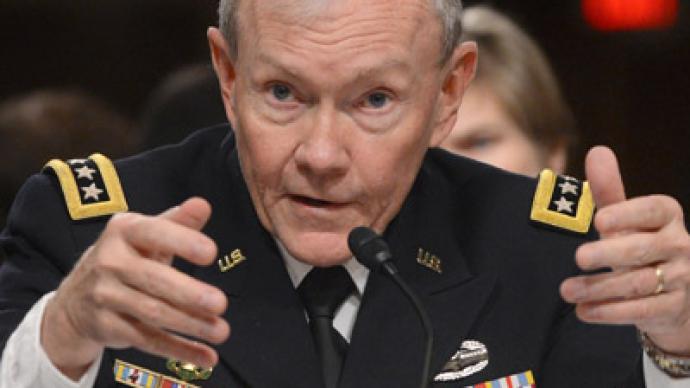The Pentagon may cut the size of its military forces for the second time in as many years if spending reductions of $470 billion over 10 years take effect, according to America’s top military chief. One third of the cuts would affect armed forces.
The cuts for the current year will come into effect on March 1 unless Congress and President Barack Obama reach agreement on an alternative plan to reduce federal deficits.
General Martin Dempsey, chairman of the Joint Chiefs of Staff, said about a third of the cuts would have to come from the armed forces, with the remaining two-thirds taken from spending on modernization, compensation and readiness.
Defense programs would be cut by about $45 billion in the seven months remaining in the fiscal year ending September 30.
The US army already began to shrink last year, downsizing toward 490,000 from around 570,000.
The Pentagon’s belt-tightening is a result of the Budget Control Act of 2011 – which includes a plan to trim $487 billion over 10 years.
The automatic cuts, known as sequestration, are the result of a 2011 impasse between Obama and congressional Republicans over raising America’s debt limit. Republicans fought to match any increases in the borrowing cap with cuts to government spending.
The two sides agreed to raise the debt ceiling, but vowed to continue negotiating to cut the nation’s deficit, setting up a deadline for the sequestration cuts as an incentive to come to a compromise.
If the cuts go into effect, “the Army will have to come down again,” Dempsey said in a statement.
But sequestration doesn’t just affect those actively serving in the military. As many as 800,000 civilian Defense Department employees would also be laid off, US Defense Secretary Leon Panetta said in a statement.
However, recent cuts by the Pentagon have nothing to do with sequestration and everything to do with attempts to adapt to the current budget climate.
Just last week, the Pentagon announced it would seek a 1 per cent pay increase for military personnel in the 2014 fiscal budget – a lower raise than the 1.7 per cent that was expected.
"That action is being taken to help us absorb the $487 billion in the Budget Control Act. It has nothing to do with sequestration," Dempsey said.
The savings would amount to $3 billion over five years.
Earlier this week, the US Defense Department also delayed the deployment of the USS Harry Truman aircraft carrier strike group to the Middle East due to budgetary concerns.
Meanwhile, the Pentagon is aiming to grab money from wherever it can, because Congress has not appropriated funds for the Pentagon for 2013. Instead, it passed a continuing resolution that temporarily extends Pentagon funding until late March at 2012 levels.
“We’re just going to have to sweep up every bit of money that is not otherwise locked down,” said Dempsey, who is scheduled to testify to Congress on the cuts next week. “Most of the money you can get at on such a short timeline happens to reside in the readiness accounts.”
Readiness includes training for US forces and operations and maintenance funds for military hardware.
"The continuing resolution under which we're operating has more money in the investment account and less money in operations and maintenance and we don't have transfer authority to move it," Dempsey said. "So our operations and maintenance is deteriorating because of the misalignment of funding in the continuing resolution."

